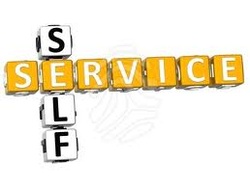
1. Customers have grown tired of old online help tools. Customer satisfaction with today's most common web self-service features is abysmal and getting worse.
As more companies rectify this by deploying next-generation self-service solutions and virtual agents, fewer customers will tolerate antiquated self-service help tools online.
2. Customers now expect a superior experience online, not just a good one. Exceptionally positive online experiences are now setting the bar for what customers expect when they visit virtually any web site in search of answers and information.
3. Consumers are impatient and protective of their time. Consumers cite "valuing my time" as the most important thing a company can do to deliver a good online customer experience. Yet many web sites are complex, hard to navigate and filled with content that provides multiple possible answers rather than a single, swift path to resolution.
4. Customer service has gone mobile. Mobile phones are now ubiquitous. Convenience and ease-of-use are the hallmarks of these mobile form factors, and web sites that offer experiences contrary to these attributes will only raise the ire of today's increasingly impatient and unforgiving mobile consumer.
5. Social media is increasingly embraced as a customer service tool. Delivering a consistent service experience across multiple channels is critical, as consumers are not shy about using social media sites to publicly complain and vent frustration about any interactions with companies that fail to satisfy them.
6. It's not just your younger customers who prefer to get their answers online. In fact, consumers of all ages are equally likely to prefer online channels for customer support.
7. Dissatisfaction online = hijacked revenues. One of the most appealing benefits of delivering a positive experience in the web channel is the opportunity for organizations to provide information that supports and encourages purchase decisions. Online, the segue from a customer service conversation to a purchase consideration conversation can be a very natural and systematic progression. This progression is thwarted, however, the moment a self-service experience fails to satisfy.
The impact of the self-service experience on revenues should not be underestimated. Customers are very likely to abandon their online purchase if they cannot find a quick answer to their questions.
These seven trends underline the urgent need to revitalize the online service experience offered by most companies. Online self-service is in need of resuscitation and useful web self-service and virtual agent technologies that can deliver an enhanced customer experience are currently underutilized.
Where To Go from Here?
What should your organization do as the first step toward improving the online customer experience? Begin with an honest and objective assessment of the self-service experience your website offers today. Looking at your customer-facing website, ask yourself these three questions.
1. Is there a single, highly visible starting point for self-service activity? Today's consumers are task-oriented when they go online. Your customers want their self-service journey to begin immediately and move swiftly to completion. Looking at your home page or most highly trafficked customer service page, ask yourself if the average customer would be able to identify the clear starting point for any customer service-related task in a matter of seconds. Any required navigation or clicking through to new pages is viewed as a time-waster and is out of alignment with their expectation.
2. Is issue resolution generally a multi-step, or a single-step activity? When looking for information online, customers want a single accurate answer that's accessible in one step. Any content page that offers more than one alternative answer, or path to an answer, requires your customer to take additional steps for sorting, scanning content and/or comparing answers. On your web site, when results are served, is the customer presented with a single answer, or multiple results to sift through?
3. How will you measure how your site is performing in this area? A quantitative assessment of your self-service performance is the first thing you will need to establish for any improvement to the self-service experience.
Optimizing self-service experience in organizations' web sites is extremely important and will help to increase revenues. Contact us today for a free consultation.



 RSS Feed
RSS Feed
